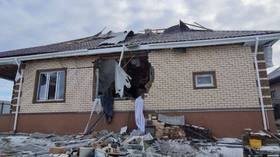Background to conflict: independent streak of breakaway republics
Both South Ossetia and Abkhazia fought wars of independence with Georgia in the early 90s – and won de facto sovereignty. But the roots of the conflict between Georgia and its breakaway regions can be traced back much fu
Both breakaway republics are striving for a future that is independent of Georgia, but each has very different histories.
When Georgia was annexed by the Russian empire in 1801, it came without either of the two regions.
South Ossetia, then part of a larger Ossetia region, had been absorbed into Russia 17 years before, through an agreement with the Ottoman Empire.
Abkhazia, was incorporated separately in 1910, as Russia gradually gained control of the South Caucasus.
“The situations with Abkhazia and South Ossetia are different,” explains Sergey Artyunov from the Caucasus department of the Russian Academy of Science.
“Abkhazia was a separate country historically, the Abkhazian population never agreed, in their hearts at least, to a unification with Georgia. South Ossetia did not exist historically as a separate region.”
The Soviet Revolution of 1917 prompted another redrawing of the Caucasus map.
The Bolsheviks, under Vladimir Lenin, split the Russian empire into 15 Republics. South Ossetia was made an autonomous region within Georgia in 1922, while Abkhazia remained a republic in its own right until Stalin incorporated it into the Georgian republic in 1931, where his repressions soon followed.
Stalin supported Lavrenty Beria, the then leader of the Georgian republic, in his Georgianisation drive.
Abkhazia was subjected to brutal acts of ethnic cleansing and many Georgians were forcibly resettled in the region.
Secessionist voices in the area remained silent until, in the twilight of the Soviet Union, perestroika sparked a wave of nationalism.
“In the 1990s, after the Soviet Union split, this old conflict has re-surfaced,” says Moscow News journalist Kirill Bessonov.
Two wars followed, as first South Ossetia and then Abkhazia claimed independence.
Thousands died and a wave of refugees left both regions.
But ceasefires brought de facto independence to both Abkhazia and South Ossetia, as well as peacekeeping forces, largely supplemented by Russian troops.
“Under any circumstances Russia remains the key guarantor of peace and stability,” said the president of South Ossetia Eduard Kokoity in December 2006. “Not only in the Georgian-Ossetian and Georgian-Abkhazian conflict areas, but also in the whole Caucasus region.”
But despite the agreements, the ceasefire never completely materialised.
Sporadic violence continued throughout the next two decades with Georgia repeatedly accusing Russia of stirring up tensions.
“We do not need a war, and the Abkhazian and Ossetian people do not need one either,” said Georgian president Mikhail Saakashvili in April 2008. “There is a force that wants the defeat of the Georgian and Abkhazian and Ossetian people. I promise that I will not let this happen.”
But war could not be avoided and the current conflict leaves both South Ossetia and Abkhazia at a crossroads.
Many believe a return to the status quo would now be impossible.
Sergey Artyunov said: “Especially after the precedent created by Kosovo, the situation after all is the same, and Abkhazians and South Ossetians perhaps have even more rights to be recognised as separate nations and independent states by the world community than Kosovo.”












